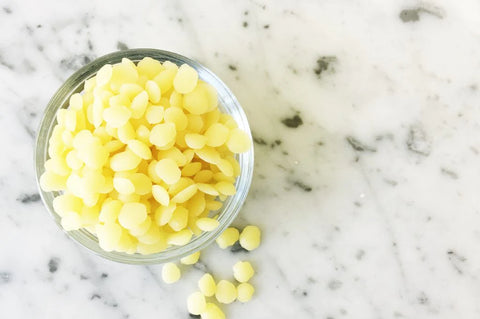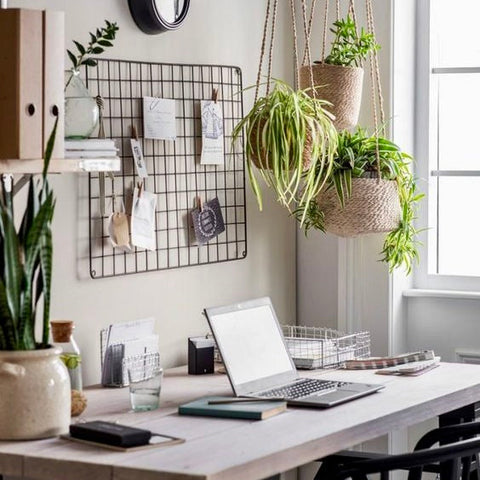
Food-Safe DIY: How to Create an All-Natural Wood Sealant with Olive Oil and Beeswax
In this quick guide, we'll show you how to make your own wood sealant at home using two simple ingredients: olive oil and beeswax*. This method is cost-effective and it also ensures that your wooden kitchenware stays fully sealed using a food-safe and natural sealant.
*If you want to use olive oil but you don't have any beeswax, you can still make a food-safe wood sealant with any of the 5 alternatives to beeswax listed below the step-by-step recipe.

[Recipe] Food-Safe Natural Wood Sealant Using Olive Oil & Beeswax:
What you will need:
- 1 part beeswax
- 3 parts olive oil
How much wax and how much olive oil do I need?
For an average-sized cutting board, the amount of each ingredient needed will be about 80ml / 3 fluid ounces of olive oil and about 28 grams / 1 ounce of beeswax. If you're not exactly sure how much you will need, we'd suggest making slightly more than you think as you can always store the remainder for next time!

Step 1: Melt the Beeswax
To melt the beeswax, use a double boiler or any regular cooking pot filled with water and a heatproof bowl (not plastic) on top. Simmer the water and stir gently until the beeswax is fully melted.

Step 2: Add the Olive Oil
Once the beeswax is melted, remove it from the heat and slowly add in the olive oil while stirring the mixture continuously.

Step 3: Mix Thoroughly Until Smooth
Mix the ingredients thoroughly until you have a smooth and well-blended golden liquid. Beeswax and olive oil will create a semi-solid paste when cooled down to room temperature, ideal for spreading onto wood.

Step 4: Allow to Cool & Store Properly
Let your food-safe wood sealant cool down for a few minutes before transferring it into a glass or metal container with an air-tight-fitting lid. Make sure to allow the sealant to fully cool to room temperature before actually sealing the lid for storage.
If you want to use your wood sealant right away, let it reach room temperature and form a paste before using it (you can put it in the fridge to speed up the process if you’re getting impatient!)

Using & Applying Your Food-Safe Sealant on Wood:
- Before applying the wood sealant, ensure the wood surface is clean and totally dry.
- Using a clean cloth or brush, spread a thin and even layer of your sealant onto the wood.
- Let the sealant sit for about 10-15 minutes to allow the wood to absorb it.
- Remove any excess residual with a cloth or paper towel.
- Buff the surface gently with a soft cloth to achieve a smooth and protected finish.
What kind of wooden objects can I use this sealant for?
This natural wood sealant can be used for all types of wooden kitchenware, homeware, decor and furniture. It is 100% food-safe and will typically provide sealed protection to the wood for 12-24 months, depending on the type of use the wooden piece gets.
A natural sealant is perfect for boards like these Round Acacia & Brass Cutting Boards
Natural Food-Safe Sealant Using Olive Oil (Beeswax Alternatives)
If you don't have beeswax but still want to make a wood sealant using olive oil, there are a few alternative ingredients you can use to achieve a similar protective effect, and still be food-safe. Here are some options:

1. Carnauba Wax: Carnauba wax is a plant-based wax extracted from the leaves of the carnauba palm tree. It is harder and more durable than beeswax, making it an excellent substitute for wood sealants. Use the same ratio as in the original recipe, replacing beeswax with carnauba wax.

2. Candelilla Wax: Candelilla wax is another plant-based wax, sourced from the candelilla shrub. It has similar properties to beeswax and can be used as a substitute in the same ratio as beeswax.

3. Soy Wax: Soy wax is made from soybean oil and is commonly used in candle-making. While not as hard as beeswax, it can still provide some protection to the wood. You may need to adjust the ratio slightly, using a bit more soy wax than beeswax.

4. Paraffin Wax (food grade): Paraffin wax is a petroleum-based wax that is usually pretty readily available. It's not as eco-friendly as the other options, but it can work as a substitute in a pinch. Use the same ratio as in the original recipe, replacing beeswax with paraffin wax. Important note: Always make sure that you are using food-safe paraffin wax.

5. Coconut Oil: If you're looking for a completely plant-based option, you can use only olive oil as the wood sealant. While it won't create a solid paste like with beeswax, a combination of olive oil and coconut oil can still provide some protection and conditioning to the wood.

When using any of the above ingredients instead of beeswax, keep in mind that the wood sealant you make may have slightly different characteristics, such as texture, runniness and hardness. It's a good idea to test the sealant on a small area of the wood surface first to make sure you get the results you want.
Why should I oil my wooden kitchenware?
Using wooden kitchenware such as cooking utensils, cutting boards and bowls & plates has many benefits. Saying this, wooden kitchenware also requires a little more maintenance than kitchenware made of plastic or metal.
Depending on the level of usage the wooden piece gets, and the type of wood it’s made from, the amount of maintenance will vary.
One of the most important parts of caring for wooden kitchenware is making sure the wood remains properly sealed. Well-sealed wood is more resistant to water and germs, as well as protecting it from getting cracked or warping. Keeping the wood sealed will also help it to hold on to its bright colouration for longer.

Hopefully, you learned something useful here today in this step-by-step guide.If you are looking for some more tips and tricks for wooden kitchenware, check out our list of related guides below.
You can also shop our growing collection of quality wooden kitchenware, home storage and decor below.
Shop:
- All Wood & Glass Kitchenware
- Plates & Bowls
- Cups, Coasters & Drinkware
- Boards & Utensils
- Home Storage





Comments (1)
Walnut oil is best wood preserver! It’s the only oil that doesn’t go rancid! It’s antifungal, antiviral, antibacterial, antimicrobial! Totally safe to eat on, you don’t have to worry if you catch your little teether gumming on the edge of your furniture.
Absolutely great for cutting boards and kids wooden toys. There is a company that preserves their handmade wooden bathtubs with Walnut oil.
I don’t understand why Walnut oil for wood preservation isn’t well known!